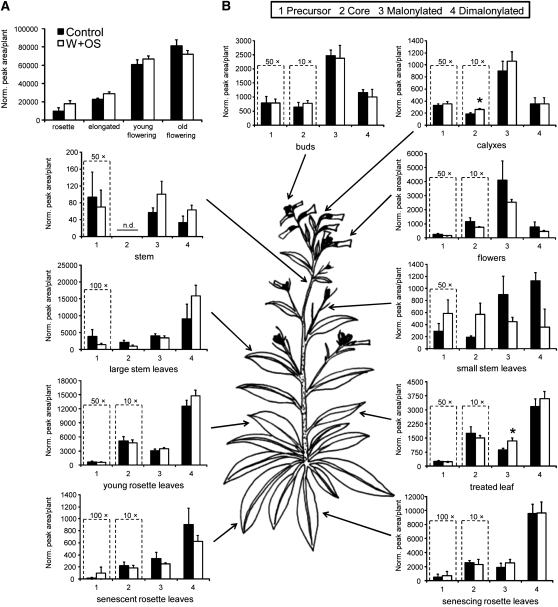Figure 2.
N. attenuata Accumulates HGL-DTGs during Growth and Differentially Accumulates Them to Young and Reproductive Tissues.
Plants were left unelicited (Control), or one leaf per plant was elicited with wounding and M. sexta oral secretions (W+OS). Aboveground tissues were harvested 3 d after treatment and pooled by tissue type. In a previous experiment, no HGL-DTGs were found in roots (data not shown). Note that some compounds have been multiplied by constants to fit the scale of the graph and that scales change among graphs. *P < 0.05 in a Student's t test. n.d., not detected.
(A) HGL-DTGs (average + se) accumulate as plants grow from the rosette stage (34 d old) and elongate (44 d old) through the initiation of flowering; total HGL-DTG pools are no different in young (54 d old) versus old (68 d) flowering plants (n = 4 plants).
(B) Accumulation of HGL-DTGs in a young flowering plant. Singly malonylated compounds accumulate in reproductive tissues, whereas doubly malonylated compounds accumulate in leaves. The greatest amounts of HGL-DTGs are found in young and reproductive tissues. W+OS elicitation of a leaf changes the composition of HGL-DTGs in that leaf, likely by reallocation from the rest of the plant because a single treatment has no significant effect on total HGL-DTG pools in (A).

